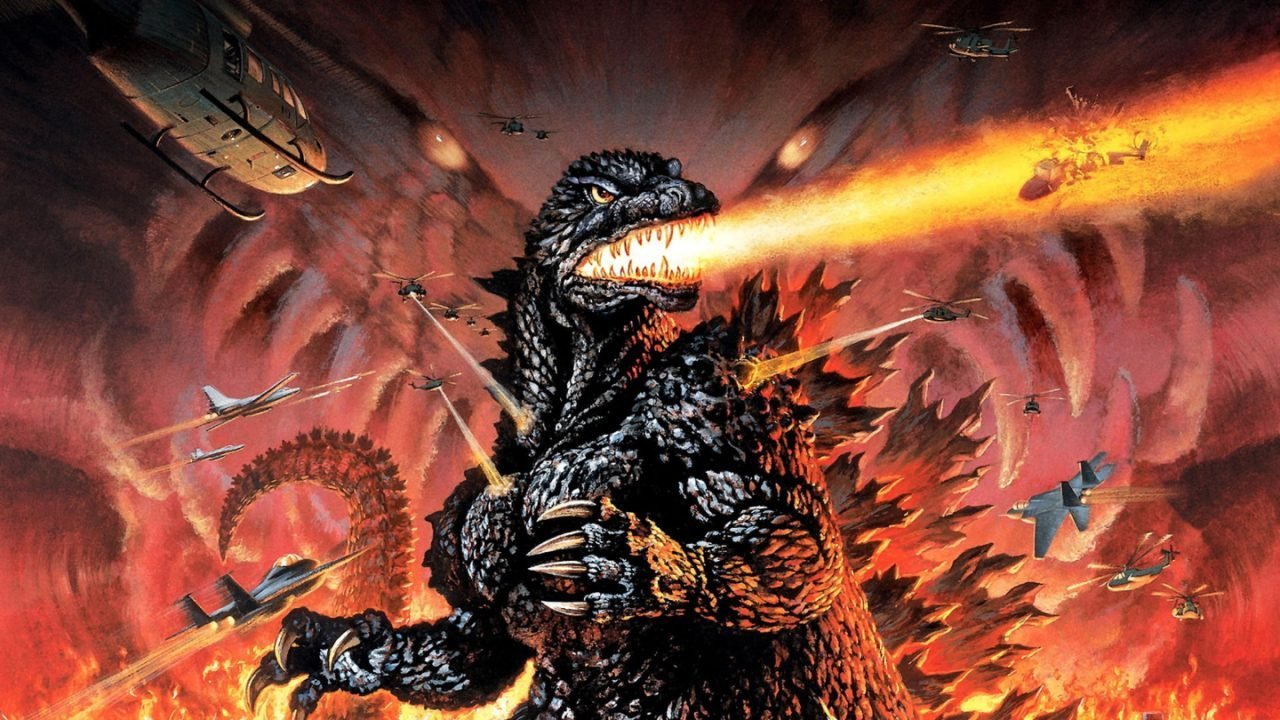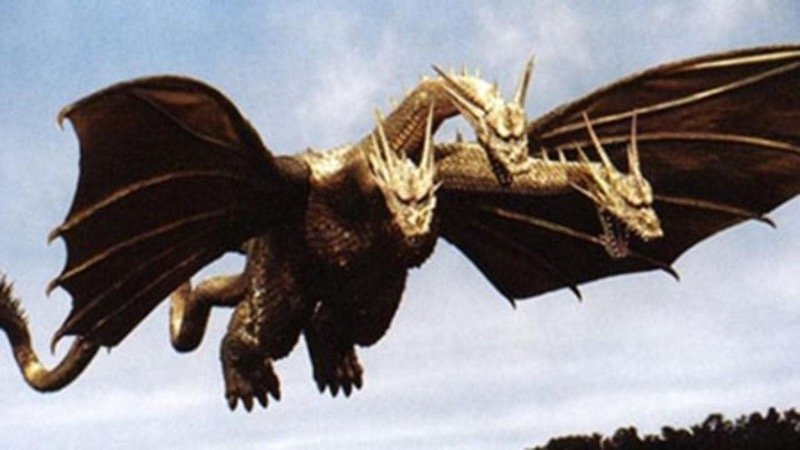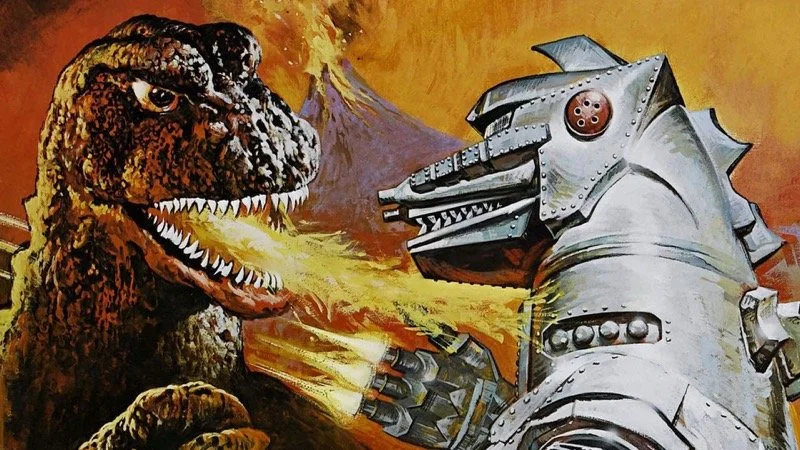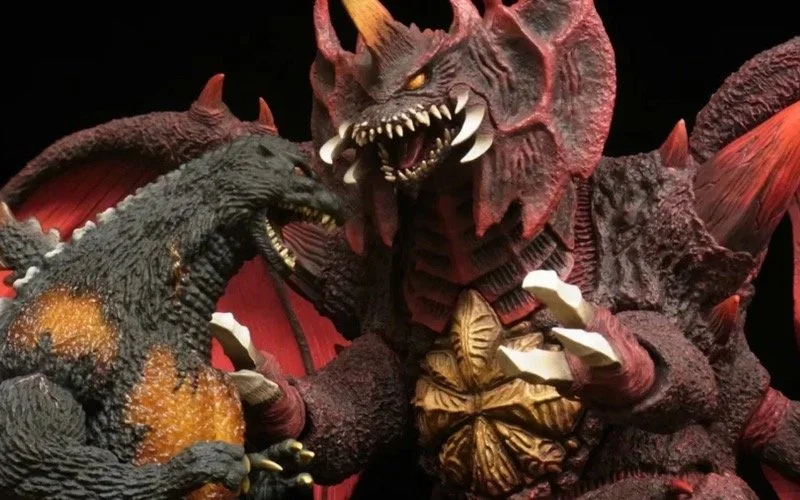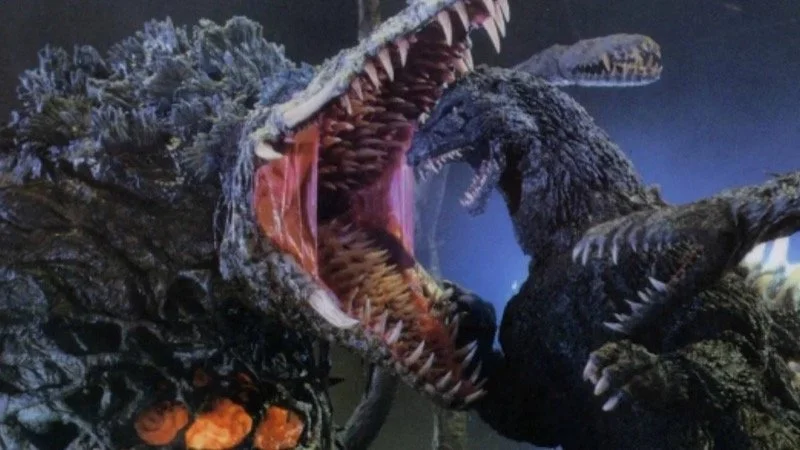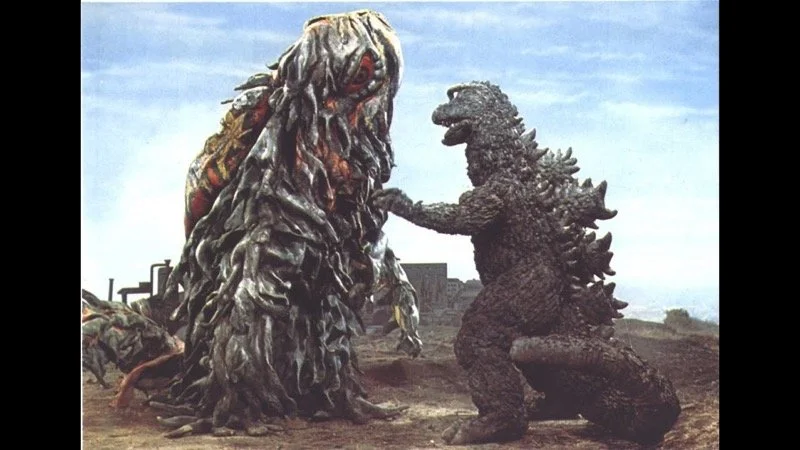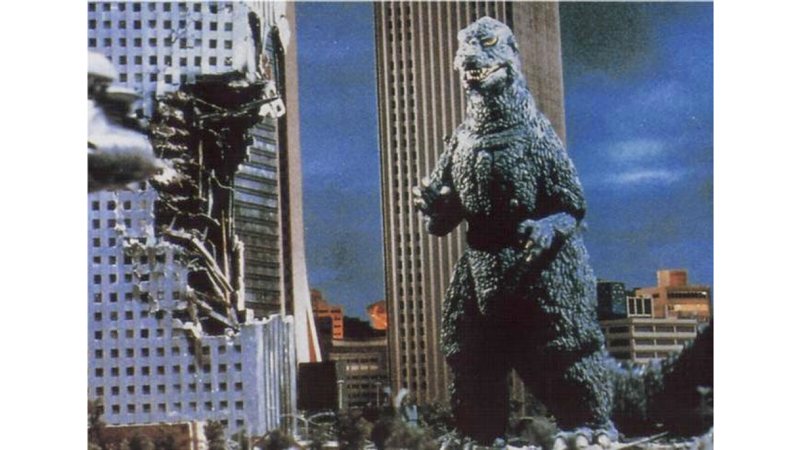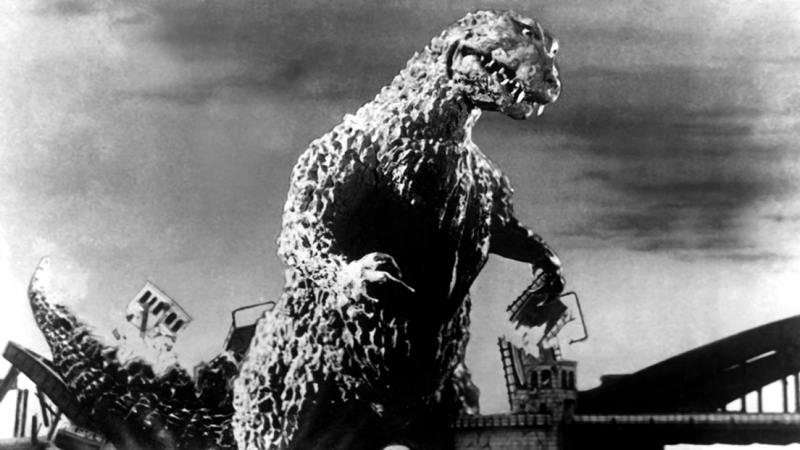Top 10 'Godzilla' Films
Image Source: Spotlight Theaters
Wow, it’s 2023, and we are looking forward to Godzilla: Minus One, and there is the 24-hour Godzilla channel that just launched this summer on Pluto. Amazingly, the Godzilla franchise will celebrate its 70th anniversary next year - what other film franchise has this longevity? The first Godzilla film premiered in 1954, and there have been Godzilla films every few years since, despite the original director and producer of Godzilla worrying they would be made laughingstocks at the theater. Their fear has proven unfounded as the third generation of moviegoers looks forward to the next installment in the series. Here we will look at the top ten Godzilla films.
* SPOILER WARNING FOR ALL MOVIES MENTIONED *
10. Ghidorah, The Three-Headed Monster (1964)
Image Source: Kaiju Battle
Introducing what some may say is the most ferocious Godzilla villain, this is the fifth film in the franchise. Not only does it showcase an alien-dragon villain that has already destroyed Venus, but it also unites Godzilla with two other favorite kaiju, Rodan and Mothra. With a Princess Prophetess from Venus, the Shobijin twins, and an assassination plot, this is an action-packed movie that has a happy ending, showing that teamwork and unity can prevail.
RELATED:
9. Godzilla Vs. Mechagodzilla (1974)
Image Source: HDWallpapers.com
This is the fourteenth film in the franchise, and it features Godzilla, and Anguirus, and introduces the title villain, along with King Caesar. This movie mixes the mystical with technology: A priestess from the ancient Azumi religion has a vision of destruction, which matches the archaeological discovery of artifacts that point toward a prophecy that leads the archaeologists to gravitate toward Okinawa’s guardian, King Caesar.
This mysticism is juxtaposed with the invasion of an alien race that has the technology to create an imposter Godzilla with super weapons, bent on destroying Japan and humanity. The priestess is able to summon King Caesar, who, along with Godzilla, defeats the Black Hole Planet Three aliens and their super weapon, Mechagodzilla.
8. Godzilla Vs. Destoroyah (1995)
Image Source: Wallpapers.com
In this 22nd installment in the franchise and the seventh and final installment in the Heisei era, Godzilla faces off against Destoroyah, a sinister kaiju that is a result of the use of the original Oxygen Destroyer in the very first Godzilla movie. In this film, Godzilla is having a nuclear reaction and is overheating, threatening humanity if he were to have a meltdown; however, when Destoroyah comes onto the scene, it is quickly realized that while Godzilla is going into meltdown mode because of his nature, Destoroyah is deliberately out to cause destruction.
Even though it was nuclear testing that created Godzilla, he has learned to be tolerant of mankind. Destoroyah, on the other hand, is the creation of a superweapon that was purposed to destroy the results of nuclear warfare, an escalation of warfare. As this is the end of the Heisei era, it is appropriate that a new Godzilla, his son, rises from the literal ashes to take his father’s place.
7. Godzilla Vs. Biollante (1989)
Image Source: Nerdist
This is the 17th film in the franchise and the second in the Heisei era. This entry does what Godzilla’s original director had in mind for the movie series: “Environmental concerns, a malfunction or accident at one of the nuclear reactors on the Eastern Sea, chemical weapons - horrific things like these are all Godzilla in my mind.”
While this is a “monster vs. monster” flick, as the Heisei era was known for, it is not just a monster mash-up. Biollante is created from the cells of a rose, Godzilla, and a deceased young woman, in hopes of keeping her soul alive. This is meant to show how humans manipulating the natural world with technology can lead to horrific consequences, in response to real-life concerns of the advancement of biotechnology.
6. Godzilla Vs. Hedorah (1971)
Image Source: Quora.com
An earlier entry in the franchise that also deals with environmental and societal concerns, Godzilla vs. Hedorah is the eleventh film in the franchise. It is considered to be controversial due to its shocking depiction of people, including babies, covered in sludge and partially dissolved victims of toxic mist. This movie came out at a time when Toho Productions was trying to reach out to a younger audience, but this entry addresses the serious problems of pollution.
It seems to combine its ambition by having a child as the main character in the film. This movie also incorporates elements of 70’s films that were popular at the time: interspersed animated scenes, psychedelic sequences in go-go clubs, and James Bond-esque opening credits. Godzilla, of course, prevails over the Smog Monster, as Hedorah is also known, teaching society an important lesson about taking care of our environment.
5. Mothra Vs. Godzilla (1964)
Image Source: Quora.com
The fourth film in the series is also the last in the Showa era that depicts Godzilla as the antagonist. In this movie, Godzilla again embodies a nuclear threat, and the premise of Mothra’s egg washing up on shore after a storm and being taken over by a businessman running “Happy Enterprises” is meant to be a satire of the commercialism and consumerism that was beginning to permeate Japanese society as it rebuilt itself after World War II. This film was made immediately after 1962’s King Kong vs. Godzilla, which was the most profitable Godzilla movie, so Toho Studios wanted to continue the winning formula of monster vs. monster.
Director Ishiro Honda injected the moral into the film, wanting to show Godzilla as a symbol of “moral judgement”, as, even though he is symbolizing the destruction of nuclear weapons, he is also indirectly responsible for killing off the human villains of the story. Mothra, according to Honda, is supposed to be a “messenger of peace”. After Godzilla’s defeat, one of the main human characters assures the Shobijin twins that humanity will thank them by building a better world.
4. Godzilla (2014)
Image Source: Hollywood Reporter
This is the second American studio production of a Godzilla movie, the first being the forgettable Godzilla of 1998, which so strayed from the original intent that Toho Studios marketed that version of the nuclear dinosaur as only “Zilla”, Godzilla’s Americanized cousin. After that fiasco, Legendary Studios picked up the American rights to Godzilla and enlisted Gareth Edwards (Rogue One) as director, and this became known as the first entry in the Legendary MonsterVerse series.
It goes back to the roots of Godzilla’s origins involving a nuclear reactor meltdown, causing a chrysalis to form and incubate a MUTO - Massive Unidentified Terrestrial Organism. Being the American version, the action is in San Francisco, where Godzilla defeats the threat. One critic called this movie, “the first truly joyous popcorn action movie of the season”. Edwards said that he received an email from Toho Studios “saying they thought it was fantastic!” Not only was this Godzilla considered a critical success, but audiences also loved it, as it made $529 million worldwide. With this entry, the United States earned the right to carry on Godzilla’s legacy.
3. The Return of Godzilla (1984)
Image Source: Kaiju Battle
This is the first Godzilla movie released in the Heisei era, though it was produced during the Showa era. It is the 16th film in the series overall. Although in the thirty years since Godzilla had first been unleashed on the world there had been many films featuring the nuclear dinosaur, this one is considered to be the sequel to the original 1954 movie. Producer Tomoyuki Tanaka had lamented how the series had devolved into silliness in the 1970s when it had originally been made to make statements on universal issues.
This was the studio’s way to bring Godzilla back to some semblance of seriousness, bringing back the threat of nuclear warfare, but this time, in the Cold War era, with the United States and the Soviet Union at the brink. This version also featured some changes in Godzilla: in the original, Godzilla stood about 164 feet, but, in thirty years, skyscrapers had gotten taller, so Godzilla had to grow, too - he now appeared to be 260 feet. There was also the costumed man in the Godzilla suit, but there was a hydraulic head for close-up special effects. Raymond Burr also comes back and reprises the role he had in Godzilla: King of the Monsters, which was the Americanized version of the original 1954 Godzilla film.
2. Shin Godzilla (2016)
Image Source: godzilla-movies.com
Again inspired by the tragedy of nuclear energy gone awry, Shin Godzilla is the first entry in the Current era, and the 31st entry overall. The concept for this film came after a tsunami washed over a nuclear reactor site in Okuma, Japan in 2011, causing the worst nuclear meltdown since the Chernobyl disaster in 1986. The Godzilla in this version is proved to be created by nuclear fission, causing massive destruction in its wake. It is capable of mutating into different forms, each more destructive than the last, but once its nuclear energy is used up, Godzilla stops and cannot move.
With scientists working with the army, the Japan Self-Defense Forces can inject Godzilla with a chemical weapon that completely deep-freezes the monster, warding off the use of thermonuclear weapons. Tokyo can be rebuilt, and people can rejoice once again. This rendition of Godzilla also says goodbye to “suitmation”: this is the first Godzilla movie to rely on CGI effects as opposed to the man in the Godzilla costume. Rejecting the monster vs. monster formula, this film put some fresh energy into the franchise and was a box-office success.
1. Godzilla (1954)
Image Source: The Atlantic
Nothing beats the original! The first motion picture to feature the nuclear dinosaur, this was the brainchild of Tomoyuki Tanaka, a film producer at Toho Studios. On his way home from Indonesia, where a movie collaboration had just been scrapped, Tanaka read an article about the American film, The Beast from 20,000 Fathoms, and got an idea for a new Japanese monster film. The difference here would be that this “beast” from under the sea would be awakened by nuclear testing. Not only does this concept come from the nuclear bombs that had been unleashed upon Japan during World War II, but also from ongoing nuclear testing in the South Pacific: the “Castle Bravo” test of a thermonuclear bomb on Bikini Atoll had rained radiation onto a Japanese fishing boat, which subsequently sold radiated fish to an unsuspecting population before coming down with signs of radiation sickness.
The fallout effects of radiation were still on every Japanese person’s mind and were very worrisome. Toho Studios hired Ishiro Honda to direct this film. Although the only films made about the bombings of Hiroshima and Nagasaki were sentimental documentaries, Honda had recurring nightmares about the Tokyo firebombings and the devastated wasteland that the two nuclear targets had become. “Why shouldn’t he express his private outrage and fears through the making of Godzilla?” Honda explained that “what appealed to me the most was the idea of making radiation visible”. Working together with special effects guru Eiji Tsuburaya, the Toho team made the classic monster film that has been renowned throughout cinematic history.
And there you have the Top Ten Godzilla movies of all time. Who knows what the next seventy years will bring with the sometimes adversary, sometimes protector, but every time King of the Monsters?
READ NEXT:
Sources: Wikipedia [1], [2], [3], [4], [5], [6], Godzilla.com, Toho Kingdom, Wikizilla, IMDB, Baker, J.I., “Godzilla”, Life, vol. 19, Issue 15, March 19, 2021

